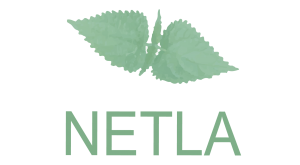Tools of National Memory: The Turkish Raid in the Textbooks
Keywords:
The Turkish Raid 1627, corsairs, piracy, textbooks, educational materials, textual analysis, collective memoryAbstract
Textbooks are the educational tools of teachers and students alike and have been so for centuries. They also bear testimony to the mentality of their time as a result of their status as transmitters of recognized knowledge and accepted values, not least the textbooks used in history and the social sciences. Authors have some freedom within the limits set by what is perceived to be recognized knowledge and accepted values depending on the cultural and political milieu at any given time. Questions relating to nationalistic values as they appeared in textbooks have been studied intensively, whereas the object of the present study, a chosen event in national history, is rare. The event in question occurred in 1627 when corsairs (“pirates with a license”) raided the coastal regions of Iceland, capturing some 400 people and killing about 40, mostly Icelanders but also some Danes. The captives were sold in the slave market in the cities of Algiers and Sallee, Morocco, and around ten per cent of them were ransomed. From a macro perspective, this event represented a spill-over of the longstanding conflicts between Islam and Christianity in the Mediterranean. This was also an age of piracy and corsairing activities in Europe and elsewhere. From a micro perspective, the “Turkish Raid” is deeply rooted in Icelandic collective memory, narrated in written accounts and entangled in folktales and place names. To include the Turkish Raid in textbooks in (purely) Icelandic history is no easy task since it is an anomaly in the country’s history, not a milestone in a long line of events and developments. To omit it from history in a textbook aimed at children and adolescents is, nevertheless, hard to justify with reference to its firm rooting in national memory. Thus the author of the first history textbook for public schools, published in 1880, included a chapter about the Raid, connecting it chronologically with the death of a prominent bishop with which it had little or no connection, apart from its timing: “The same year as Bishop Guðbrandur died… Turkish Vikings from Algiers came…”. Thereafter a description of the course of events follows in a dispassionate style without any apparent conclusion. A few more short textbooks were published which included similar chapters. In 1915, two textbooks in Icelandic history for primary and secondary school signalled what might be described as a nationalistic turn. The most influential, by Jónas Jónsson of Hrifla (his homestead), managed to firmly categorise the raiders as the “other” by describing how they lived under an “alien” (i. annarlegur) climate in a robbers’ nest: “The people were of the Mohammedan faith, utterly barbaric and belligerent,” Jónsson wrote. He managed to cast doubt on the Danish government with rhetoric tricks and half-truths, claiming that a Danish officer was “said to have” pointed out that Iceland was a target, describing the Danish governor as “a man of little courage,” and recounting that the Danish merchant in the Westman Islands had managed to escape “with his rabble” while the Icelanders were not as lucky. Jónas Jónsson’ textbook was deliberately written to promote the full separation of Iceland from Denmark and became outdated in its hostility towards Denmark as time passed. However, Jónsson’s skilfull writing and reference to nationalistic feelings led to his textbook holding sway for half a century. In 1968 another textbook appeared with less text and in which the nationalistic pathos had been toned down considerably. By the same token, it included a rather bloodless account of the Turkish Raid. Some years earlier, a picture book titled Our History was published aimed at the youngest pupils. There, the illustrations of the Raid borders on the exotic and the barbaric (Picture 4). These books are considered to be a rather weak attempt at challenging Jónsson’s magnum opus. A textbook by Jón Jónsson Aðils was published in 1915 for secondary school students, which was reminiscent of Jónsson’s book for primary schools, although its account is less accusatory towards the Danes. In 1930 an alternative textbook for secondary schools was published which emphasized cultural and economic history (Picture /mynd 5). This was not histoire événementielle and the Turkish Raid is not assigned a special chapter as before. However, the original writings about the Raid are referred to and also touched upon when the most prominent poet of the 17th century, whose wife was a captive in the Raid, is discussed. This textbook, written by Arnór Sigurjónsson, received praise from Nordic colleagues, but was probably not widely used. The 1970s saw a wave of modernization in Icelandic education which affected most school subjects. An integration of history with other subjects under the headline of Social Studies (i. samfélagsfræði) heralded new critical and global thinking. How the Turkish Raid fared in these reforms and others to come in a globalized world is the subject of a second article.Downloads
Download data is not yet available.

